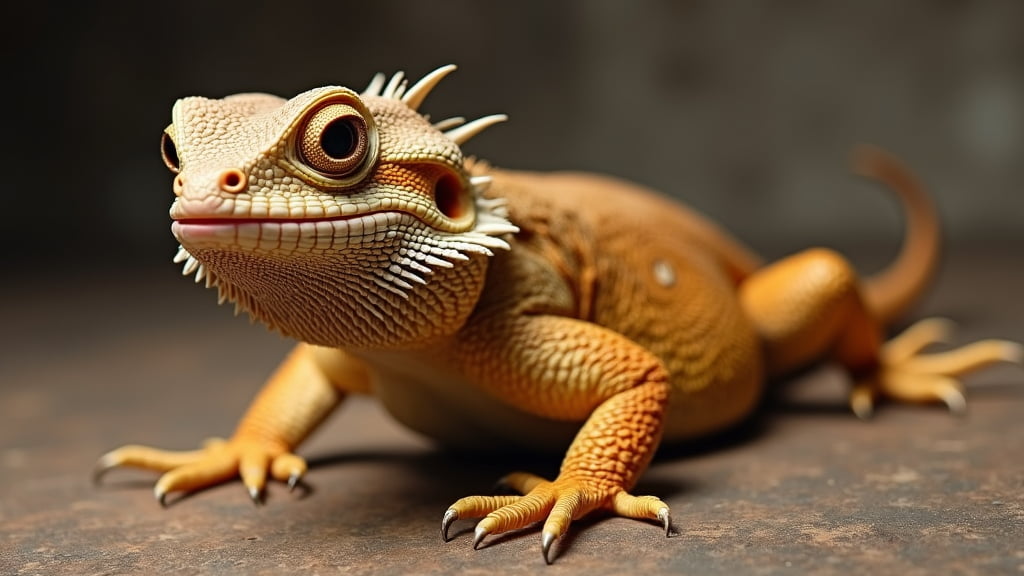Owning a bearded dragon can be an incredibly rewarding experience. These fascinating reptiles are known for their friendly demeanours and low-maintenance care compared to other exotic pets. However, one area that often puzzles new and even seasoned owners is diet. What should you be feeding your bearded dragon: live food or prepared food? Let’s dive into the details and help you make an informed decision.
Why Diet Matters for Bearded Dragons
Proper diet is crucial for the health and well-being of your bearded dragon. A balanced diet ensures:
- Proper growth and development
- Healthy weight maintenance
- Immune system support
- Longevity and quality of life
I’ve had bearded dragons for over a decade, and my wide array of feeding experiments has resulted in some insightful revelations. Let’s break down the two primary types of food: live food and prepared food.
The Case for Live Food
Nutritional Benefits
Live food—primarily insects like crickets, mealworms, and dubia roaches—provides essential nutrients that prepared food might lack. Insects are high in protein and contain necessary fibres and fats. One of my bearded dragons, Spike, thrived on a diet rich in live crickets and dubia roaches.
Protein Content
Live food is naturally rich in protein, which is critical for a bearded dragon’s growth and muscle development. Other sources may not provide the same quantity and quality of protein.
Behavioural Enrichment
Hunting live prey offers physical and mental stimulation for your pet. Observing Spike chase after crickets is not just amusing but it also keeps him active and engaged.
The Downside
Parasite Risk
Live food can sometimes carry parasites or bacteria. To mitigate this risk, always purchase your insects from reputable suppliers.
Convenience and Cost
Managing live food can be time-consuming and potentially costly. You’ll need to maintain a separate habitat for the insects, and ensuring they remain healthy can be challenging.
The Case for Prepared Food
Nutritional Balance
Prepared foods, available in pellets or powdered form, are typically formulated to meet dietary requirements comprehensively. Many commercial brands include a balanced mix of vitamins, minerals, and nutrients. My younger bearded dragon, Ember, has thrived on a predominantly pellet-based diet.
Convenience
Prepared food is extremely convenient. You can store it easily and it has a long shelf life. It’s also cleaner, eliminating the need for live insect habitats.
Controlled Nutrition
These are formulated with a precise nutritional balance, crucial for ensuring your pet gets all necessary nutrients without overloading on any one component.
The Downside
Less Stimulation
Prepared food doesn’t provide the same hunting excitement as live prey. To counteract this, you can occasionally offer live insects.
Acceptance Issues
Some bearded dragons may initially reject prepared foods, particularly if they’re accustomed to a live diet. Transitioning should be done gradually to encourage acceptance.
Balancing the Diet: The Best of Both Worlds
Mixing Both Worlds
From my extensive experience, the optimal diet for a bearded dragon blends both live and prepared foods. This ensures:
- Comprehensive nutrition
- Behavioural enrichment
- Ease of maintenance
Here’s a sample feeding schedule that combines both types:
- Morning: Serve vegetable-based prepared food mixed with calcium powder.
- Afternoon: Offer a few live insects like crickets or dubia roaches.
- Evenings: Smaller portions of fruits and insects or a top-up of prepared food.
Vegetables and Fruits: The Other Essentials
Don’t forget to incorporate a variety of vegetables and fruits. Bell peppers, carrots, and leafy greens are excellent options. Fruits like apples and strawberries can be given sparingly. I found that varying the diet not only keeps my pets healthier but also more enthusiastic about feeding time.
Gut-Loading and Supplementation
When feeding live insects, gut-loading (feeding the insects nutrient-rich foods before offering them to your dragon) enhances their nutritional value. Additionally, always include a calcium supplement to prevent deficiencies.
Conclusion
Deciding between live food and prepared food for your bearded dragon doesn’t have to be an all-or-nothing choice. By understanding the benefits and downsides of each, and perhaps integrating both into your pet’s diet, you can ensure they live a long, healthy, and happy life. Always consult your vet for any specific dietary concerns and adjustments.
Your bearded dragon’s diet plays a pivotal role in their overall health, and making informed choices benefits both you and your pet. Happy feeding!
Explore more about Proper Bearded Dragon Care and check out our recommended product: Best Bearded Dragon Food.

